Common Lip Problems and Their Causes
Introduction

The lips, an integral part of our face, contribute significantly to our overall appearance and functionality. However, the skin on our lips is delicate and often prone to various issues, such as dryness, chapping, discoloration, and allergic reactions. Understanding the causes of these common lip problems is crucial in effectively addressing and preventing them. This article delves into the common issues affecting lips, their causes, and practical solutions to maintain healthy, beautiful lips.
1. Dryness and Chapping
Dry and chapped lips are among the most common lip problems, affecting people across different climates and age groups. The lips lack oil glands, making them more susceptible to dryness compared to other parts of the body. Common causes of dry and chapped lips include:
1.1 Weather Conditions

Extreme weather conditions, such as cold, windy winters and hot, dry summers, can strip the moisture from your lips, leaving them dry and cracked. During winter, the cold air outside and dry indoor heating can dehydrate the lips. In summer, exposure to the sun’s UV rays can have a similar drying effect.
1.2 Dehydration

Inadequate water intake is a primary cause of dry lips. The lips are one of the first areas to show signs of dehydration. When the body is not properly hydrated, it cannot maintain the moisture balance in the lips, leading to dryness and cracking.
1.3 Licking Lips

Licking the lips might provide temporary relief from dryness, but it exacerbates the problem in the long run. Saliva evaporates quickly, leaving the lips even drier than before. Additionally, the enzymes in saliva can irritate the skin on the lips, causing further damage.
1.4 Certain Medications
Some medications, including those for acne (such as isotretinoin), antihistamines, and chemotherapy drugs, can cause dry lips as a side effect. These medications reduce the production of saliva or alter its composition, contributing to lip dryness.
1.5 Lack of Humidity

Living in areas with low humidity, especially in air-conditioned or heated environments, can significantly dry out the lips. Air conditioning and heating systems remove moisture from the air, leading to a dry environment that affects the lips.
Solutions for Dryness and Chapping
- Hydration: Ensure you drink plenty of water throughout the day to keep your body and lips hydrated.
- Lip Balm(Pudaier Lip Balm): Use a good-quality lip balm containing hydrating ingredients like beeswax, shea butter, and natural oils. Avoid lip balms with menthol or camphor, as they can further dry out the lips.
- Humidifier: Use a humidifier at home, especially in dry weather, to maintain moisture levels in the air.
- Avoid Licking Lips: Resist the urge to lick your lips. Instead, apply lip balm regularly to maintain moisture.
- Medication Consultation: If you suspect your medication is causing dry lips, consult with your doctor for possible alternatives or additional treatments.
2. Discoloration
Lip discoloration can be a cosmetic concern for many individuals. It can manifest as dark spots, an overall darkening of the lips, or uneven pigmentation. Several factors contribute to lip discoloration:
2.1 Sun Exposure

Prolonged exposure to the sun’s ultraviolet (UV) rays can cause hyperpigmentation on the lips, leading to dark spots or an overall darker lip color. The skin on the lips is thinner and more sensitive, making it more susceptible to sun damage.
2.2 Smoking

Smoking is a major cause of lip discoloration. The nicotine and tar in cigarettes can stain the lips, causing them to darken over time. Additionally, smoking reduces blood flow to the lips, leading to a dull, discolored appearance.
2.3 Allergic Reactions
Allergic reactions to lip products, such as lipsticks, lip balms, and even toothpaste, can cause inflammation and hyperpigmentation. Certain ingredients in these products may irritate the skin, leading to discoloration.
2.4 Hormonal Changes
Hormonal changes, especially during pregnancy or due to oral contraceptives, can lead to melasma, a condition characterized by dark, discolored patches on the skin, including the lips.
2.5 Medical Conditions

Certain medical conditions, such as anemia, vitamin deficiencies, and Addison’s disease, can cause lip discoloration. These conditions affect the overall health and pigmentation of the skin.
Solutions for Discoloration
- Sun Protection: Use a lip balm with SPF to protect your lips from UV damage. Reapply it regularly, especially when outdoors.
- Quit Smoking: Reducing or quitting smoking can help prevent further discoloration and improve the overall health of your lips.
- Patch Test: Perform a patch test before using new lip products to check for potential allergic reactions.
- Healthy Diet: Maintain a balanced diet rich in vitamins and minerals to prevent deficiencies that can cause discoloration.
- Medical Consultation: Consult with a healthcare provider to rule out any underlying medical conditions causing lip discoloration.
3. Allergic Reactions
Allergic reactions affecting the lips can cause a range of symptoms, including redness, swelling, itching, and rashes. These reactions can be triggered by various allergens found in everyday products:
3.1 Cosmetics and Skincare Products
Using high-quality lip makeup and skin care products is an important step to ensure healthy and beautiful lips. However, some people may have allergic reactions to the ingredients in certain products, which may cause lip discomfort or even discoloration. Therefore, it is crucial to choose products that are suitable for your skin type.
First, choose products with natural ingredients, such as lipsticks and lip balms containing beeswax, shea butter and coconut oil, which not only moisturize the lips but also reduce the risk of allergic reactions.
Second, it is recommended to perform a patch test before using a new product. Apply a small amount of the product to the inside of your wrist, wait 24 hours, and observe if there is an allergic reaction. This ensures that the product is suitable for your skin type and avoids unnecessary lip discomfort.
The author here recommends that you try Pudaier’s lip products. The author has personally tested that their lipsticks do have some care effects on the lips. The most important thing is that their lipstick colors are really versatile.
Click on the image below to jump.
3.2 Dental Products

Toothpastes and mouthwashes can also contain ingredients that cause allergic reactions. Ingredients like sodium lauryl sulfate (SLS), flavorings, and preservatives are common culprits.
3.3 Foods and Beverages
Certain foods and beverages can trigger allergic reactions on the lips. Common food allergens include nuts, shellfish, and certain fruits. Additionally, acidic foods and beverages can irritate the lips, exacerbating allergic symptoms.
3.4 Environmental Allergens

Pollen, dust mites, and pet dander are environmental allergens that can cause reactions on the lips, especially in individuals with preexisting allergies or asthma.
Solutions for Allergic Reactions
- Identify Allergens: Keep a diary of products and foods you use to help identify potential allergens.
- Patch Test: Perform patch tests for new cosmetic and dental products to ensure they don’t cause allergic reactions.
- Hypoallergenic Products: Opt for hypoallergenic and fragrance-free products to reduce the risk of allergic reactions.
- Avoid Irritants: Avoid known allergens and irritants in foods and the environment.
- Medical Advice: Seek medical advice if you experience persistent allergic reactions to determine the cause and receive appropriate treatment.
Conclusion

Understanding the common problems that affect the lips and their underlying causes is the first step in maintaining healthy, beautiful lips. By addressing factors such as weather conditions, dehydration, harmful habits, and allergens, you can prevent and treat issues like dryness, chapping, discoloration, and allergic reactions. With proper care and the right products, you can ensure your lips remain soft, hydrated, and vibrant.


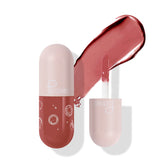

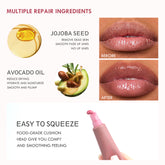

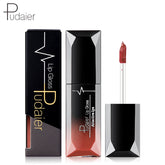

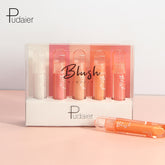

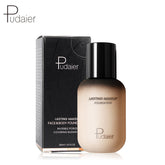








Leave a comment
All blog comments are checked prior to publishing